Photographer Daikichi Amano's deliciously macabre portraits are a titillating blend of horror, dark humor, and animal parts. (NSFW.)


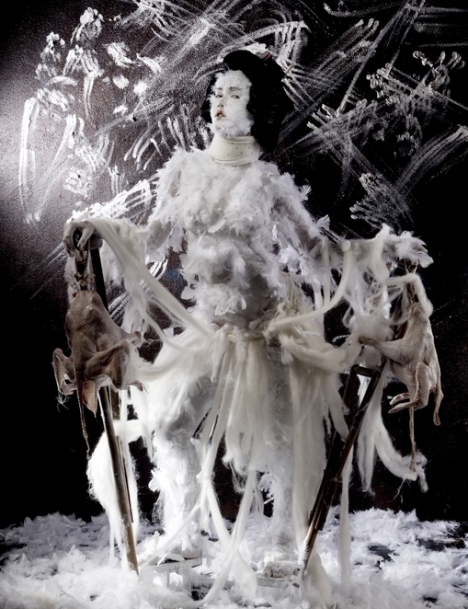

Photographer Daikichi Amano's deliciously macabre portraits are a titillating blend of horror, dark humor, and animal parts. (NSFW.)




What will automobiles look like 50 years down the road? If they turn out to be anything like these concepts from the design studios of four major automakers, we are in for quite a ride.
* * * * *
- Mazda Motonari RX
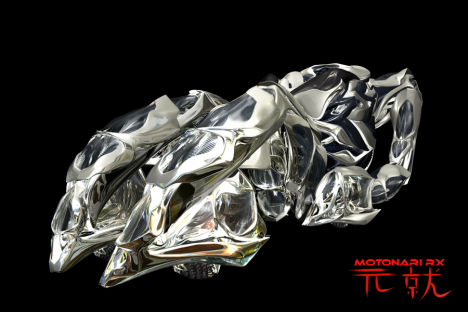
Mazda Motonari RX [+]
In Mazda's vision of the late 2050s, advances in molecular engineering have rendered metal-based manufacturing obsolete. The rise of ubiquitous computing and artificial intelligence drastically accelerates the automotive production cycle. Cars are cheap, lightweight (around 200 lbs, or less than 100 kg), and equipped with intelligent crash avoidance systems that eliminate traffic accidents. However, people still manage to get speeding tickets.
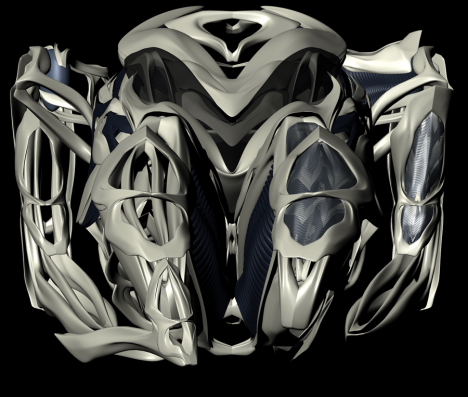
[+]
The Mazda Motonari RX -- which takes its name from the legendary Japanese warrior Mori Motonari -- interfaces seamlessly with the driver to function as an extension of the body.
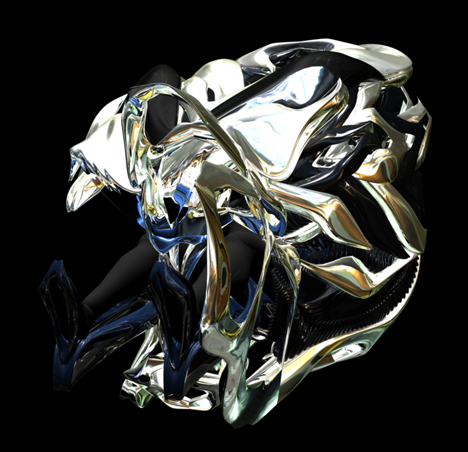
The vehicle drives sort of like a street luge. Acceleration and direction is determined by two armrest mounted control points, and the vehicle's exoskeletal frame shape-shifts in accordance with the position of the driver's arms and legs when enveloped in the seat.
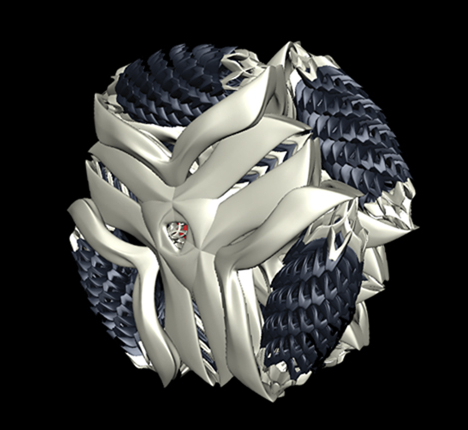
Omni wheels
Four omnidirectional wheels allow 360 degrees of movement, and the tread expands or contracts to suit the driving conditions.
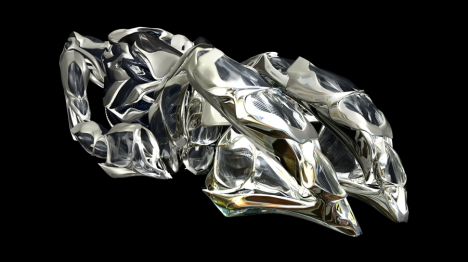
[+]
A "haptic skin" suit consisting of millions of microscopic actuators enables the driver to experience the road psycho-somatically while receiving electrical muscle stimulation from the onboard AI guidance system (or other remotely located drivers).
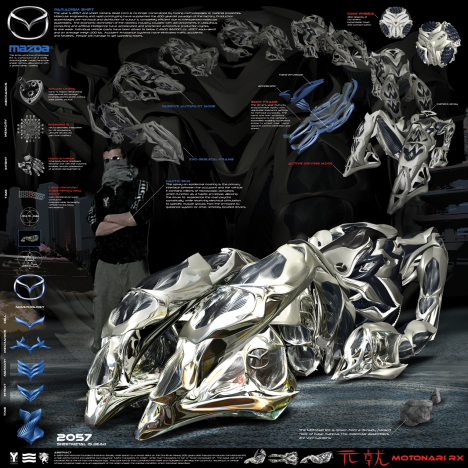
[+]
The vehicle's entire structure is comprised of a 100% reprototypable, carbon nanotube/shape memory alloy weave with a photovoltaic coating, which allows the vehicle to mimic the driver's body movements while powering the in-wheel electrostatic motors. [More]
* * * * *
- Toyota Biomobile Mecha
In Toyota's vision of the late 2050s, cities have developed vertically due to limited area on the ground, leading the transportation industry to develop new vehicles capable of navigating vertical space.
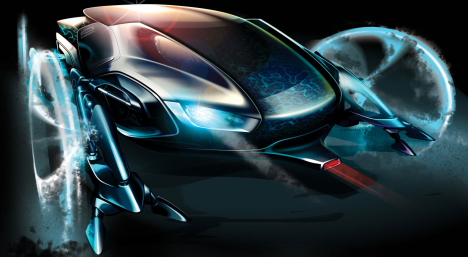
Toyota Biomobile Mecha [+]
Toyota's Biomobile Mecha, a shape-shifting vehicle with nano-laser wheels, can read and adapt to changes in the environment and travel vertical pathways by means of biomimetic feet with powerful suction.
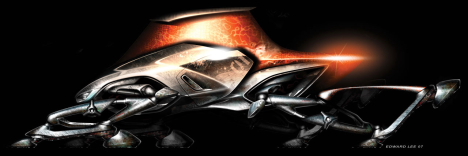
[+]
In addition, the Biomobile Mecha is powered by pollution. A special skin derives energy from harmful substances in the air, so the vehicle never runs out of fuel (as long as the future skies remain polluted) and restores balance to the environment while it goes.

[+]
The real-time strategic navigation planning system, which reads the environment via a 3D scanner, gives the vehicle "instincts" that enable it to autonomously adapt to the driving environment.
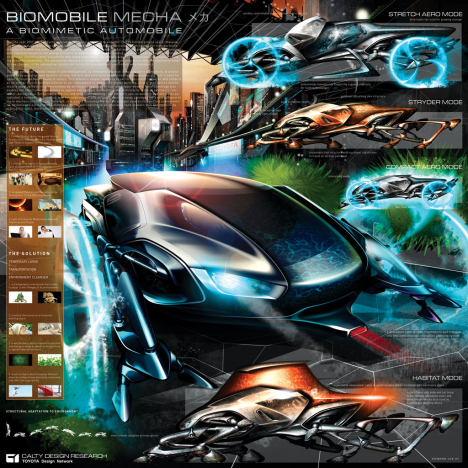
[+]
Advanced nanotechnology enables the vehicle to expand and contract its structure horizontally and vertically as needed, allowing it to serve as a compact commuter, an aerodynamic performance vehicle, or even as a temporary dwelling. [More]
* * * * *
- Nissan OneOne
In Nissan's vision of the 2050s, robots have become an integral part of our lives, blurring the line between humans and machines. The Nissan OneOne combines personal mobility with the family robot concept.
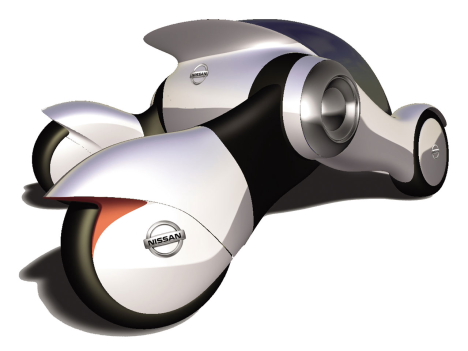
[+]
Billed as the ultimate pet, the Nissan OneOne (pronounced "wan-wan," the Japanese sound for a barking dog) is a friendly, helpful member of the family of the future. Able to operate autonomously without a driver, the GPS-guided vehicle can help out by picking up the dry cleaning, fetching the groceries, and taking the kids to school.
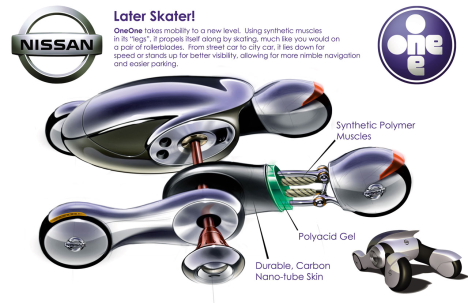
[+]
OneOne propels itself forward by flexing and relaxing synthetic polymer muscles in its "legs," much as you would if skating on roller blades.
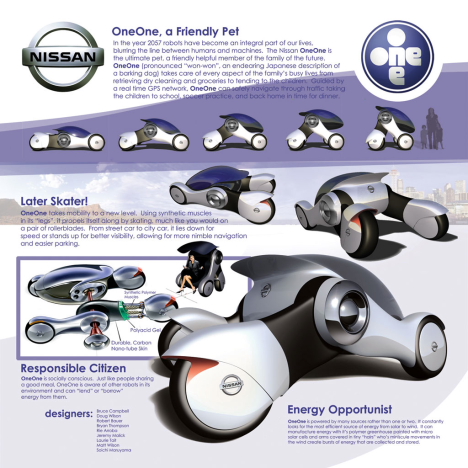
[+]
The vehicle can also assume various positions depending on the driving environment. It reclines to achieve greater speed, and it stands up to increase visibility and squeeze into tight spaces. [More]
* * * * *
- Honda 124 (One to the Power of Four)
In Honda's vision of the 2050s, people have flocked back to the suburbs, fueling consumer demand for a truly flexible commuter vehicle.
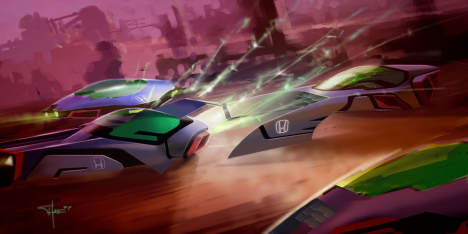
Honda 124 [+]
The solar-hybrid powered Honda 124 (One to the Power of Four) is an energy-efficient, modular vehicle that can separate into four different fully functional units, each uniquely suited for specific driving conditions.
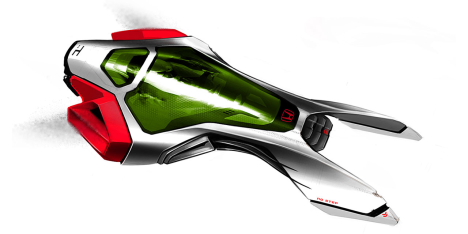
[+]
A combination of robotics, artificial intelligence and molecular engineering (which enables the body panels to be reshaped according to use) allow each module to instinctively reconfigure itself and operate as a fully functional unit. Two of the modules are suitable for short-distance inner-city driving, while the other two are ideal for longer distances at higher speeds.
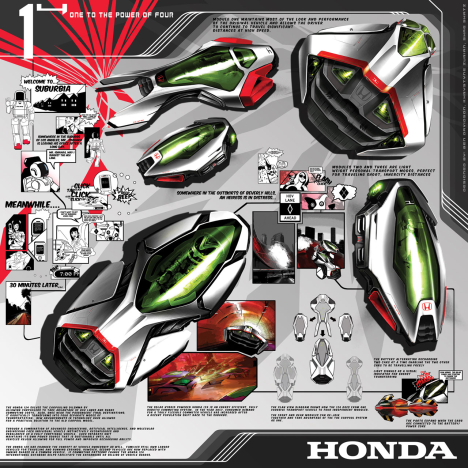
[+]
Because the Honda 124 consists of multiple units that can be joined together, carpoolers can take advantage of HOV lanes and share commuting costs. [More]
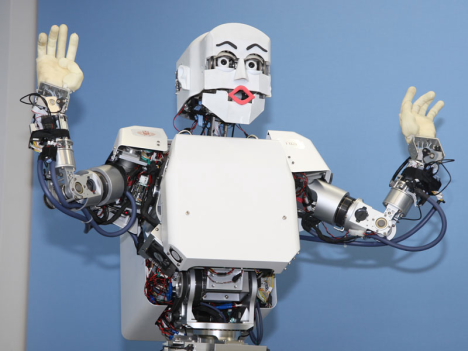
Surprise
Researchers from Waseda University have teamed up with Kyushu-based robot manufacturer tmsuk to develop a humanoid robot that uses its entire body to express a variety of emotions. (Watch video.)
Named "KOBIAN," the android integrates features of two previously developed robots -- the WABIAN-2 bipedal humanoid and the WE-4RII emotion expression humanoid -- into a bipedal machine that can walk around, perceive its environment, perform physical tasks, and express a range of emotions. The robot also features a new double-jointed neck that helps it achieve more expressive postures.
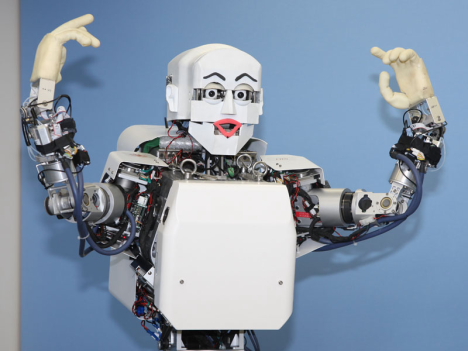
Delight
KOBIAN can express seven different feelings, including delight, surprise, sadness and dislike. In addition to assuming different poses to match the mood, the emotional humanoid uses motors in its face to move its lips, eyelids and eyebrows into various positions. To express delight, for example, the robot lifts its soft rubbery hands over its head and opens its eyes and mouth wide.
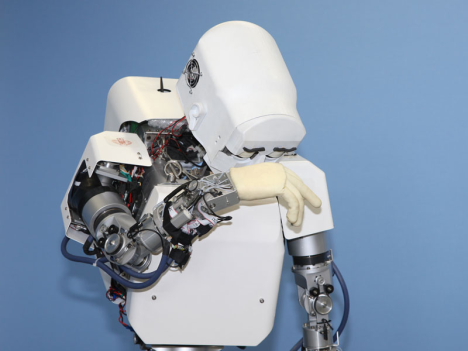
Sadness
To show sadness, the robot slouches over, hangs its head down and holds a hand up to its face in a gesture of grief.
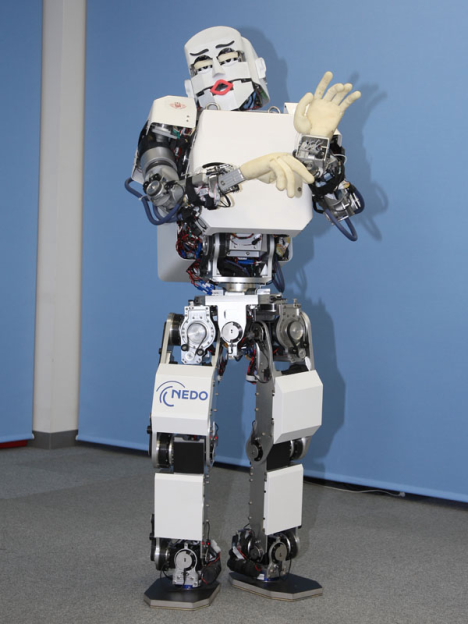
Aversion
According to KOBIAN's developers, the robot's expressiveness makes it better equipped to interact with humans and assist with daily activities. In the future, the robot may seek work in the field of nursing.
[Source: Nikkei Net // Photos, video: Robot Watch]
Character designer and kaiju evolutionist Yasushi Torisawa produced a fantastic set of classic Toho movie monster illustrations for the summer 2008 edition of Uchusen magazine.

Godzilla vs. Biollante [+]

Hedorah [+]
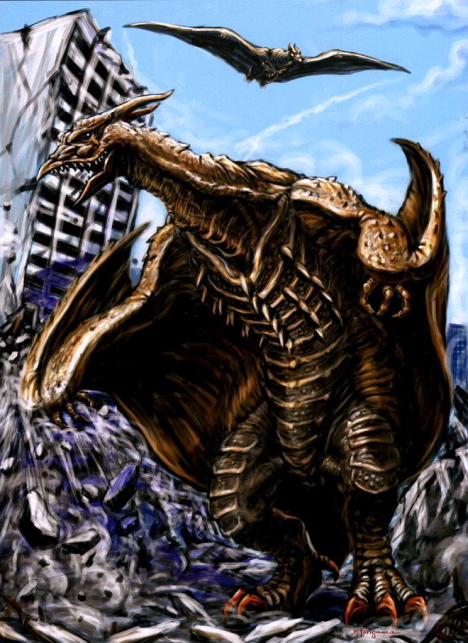
Rodan [+]

King Ghidorah & Gigan [+]

The Green Gargantua [+]

The Brown Gargantua [+]

King Ghidorah vs. Gorosaurus [+]

Baragon [+]
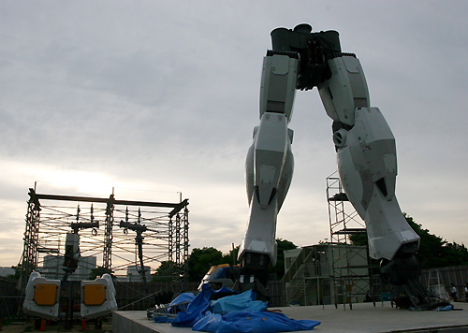
Piece by piece, an 18-meter tall, 35-ton full-scale Gundam statue is being assembled in Odaiba, Tokyo to commemorate 30 years of Mobile Suit Gundam. When finished in mid-July, the enormous figure will entertain onlookers by moving its head and shooting light and mist from 50 points on its body. Until then, we have these photos of its magnificent legs and assorted parts.
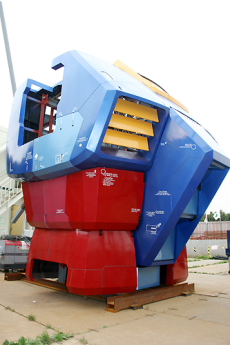
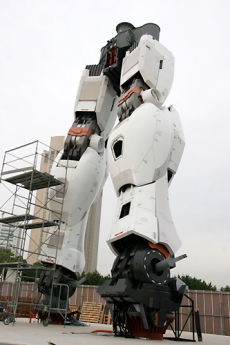
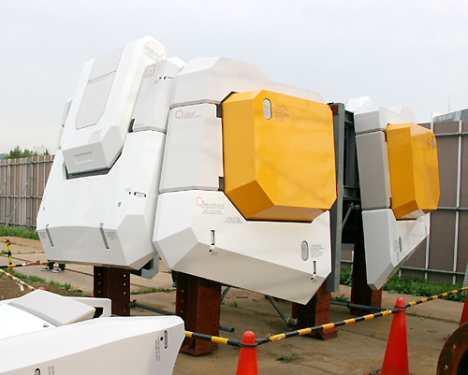
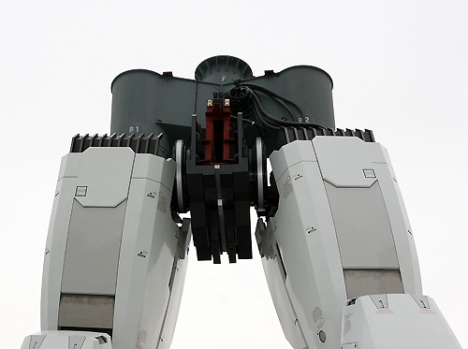
More photos at Mainichi.
(Thanks, Jerome!)

Can GPS tracking technology prevent a swine flu pandemic? Japan's Ministry of Internal Affairs and Communications hopes to find out this autumn by testing a mobile phone-based GPS tracking system that constantly monitors each individual's location and sends text alerts to participants if they cross paths with anyone who is later identified as a flu victim.
The proposed system relies on mobile phone providers to constantly track the subjects' geographical locations and keep chronological records of their movements in a database. When a person is labeled as "infected," all the past location data in the database is analyzed to determine whether or not anyone came within close proximity to the infected individual.
The system will know, for example, whether or not you once boarded the same train or sat in the same movie theater as the infected individual, and it will send you a text message containing the details of the close encounter. The text messages will also provide instructions on specific measures to take in response.
The primary purpose of the test, which will involve about 2,000 volunteers in both urban and rural areas, is to verify the precision of GPS tracking technology, estimate the potential costs of operating such a system, and determine whether or not such a system can be put into practical use.
To be of any real use in a place like Tokyo, a phone-based disease-tracking system would require the participation of hundreds of thousands, if not millions, of subscribers willing to have their locations tracked -- not a stretch given the popularity of wireless services such as NTT DoCoMo's "iConcier," which provides personalized, concierge-like services to individual mobile phones based on location data, shopping history, and other personal information.
From a privacy standpoint, opinions differ on the degree to which sensitive personal data such as location and travel history should be shared and used. With this in mind, the ministry will also explore the issue of psychological resistance to the use of personal information.
[Source: Asahi]
Here is some awesome turn-of-the-century footage of "Robo Alpha" (noise artist Government Alpha in robot disguise) rocking Detroit. (Best enjoyed at maximum volume.)
[Via: Awesome Tag]

Nothing says "marriage or bust" quite like the Marriage-Hunting Bra (Konkatsu Bra), a new concept lingerie by Triumph International designed to help the marriage-minded woman find a husband by displaying how much time remains until she hopes to tie the knot. (Watch video.)
In addition to the easy-to-read LED display that shows the number of days until the wearer's ideal wedding date, the white lace bra -- which has the look and feel of a wedding dress -- features a ring holder and convenient pockets for a pen and official stamp seal, which will be needed when filling out the marriage license application.
Triumph, which unveils a new concept bra every six months, hopes the Marriage-Hunting Bra will encourage more people to get hitched, even though it is not for sale. The creators were inspired by Konkatsu-Jidai ("The Times of Marriage-Hunting"), a recent best-seller by Toko Shirakawa that looks at Japan's declining marriage rate and the growing difficulty that people in their 30s and 40s face when seeking marriage partners.
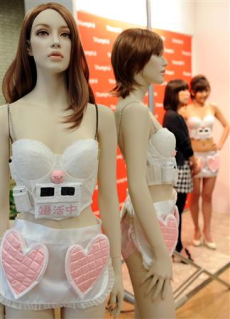

Recent statistics indicate that 47 percent of men and 32 percent of women in their early 30s are unmarried. These figures appear to be on the rise as people focus more on career than on family, and as people increasingly view marriage as a personal preference, not an essential part of life.
[Source: Sankei]
More concept bras by Triumph:
- Shopping Bag Bra
- Solar Power Bra
- My Chopsticks Bra
- Voter Turnout Bra
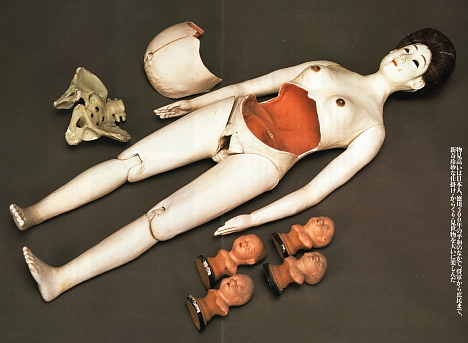
19th-century obstetric training doll - Wada Museum [+]
In the 18th and 19th centuries, sideshow carnivals known as misemono were a popular form of entertainment for the sophisticated residents of Edo (present-day Tokyo). The sideshows featured a myriad of educational and entertaining attractions designed to evoke a sense of wonder and satisfy a deep curiosity for the mysteries of life. One popular attraction was the pregnant doll.
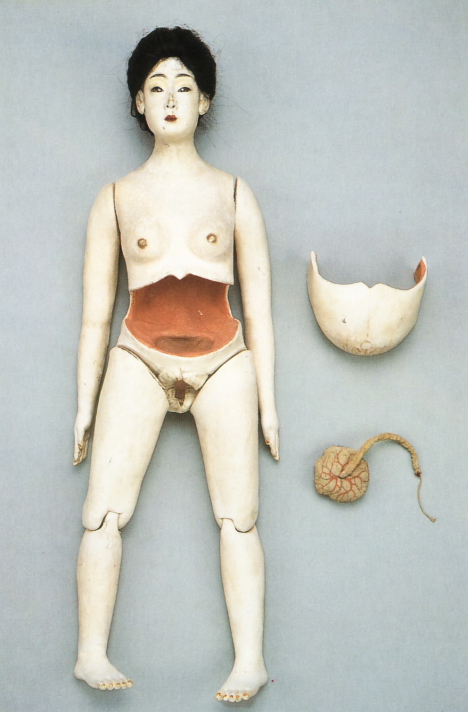
"Light-skinned" pregnant doll - Edo-Tokyo Museum [+]
Although it is commonly believed that these dolls were created primarily to teach midwives how to deliver babies, evidence suggests they were also used for entertainment purposes.
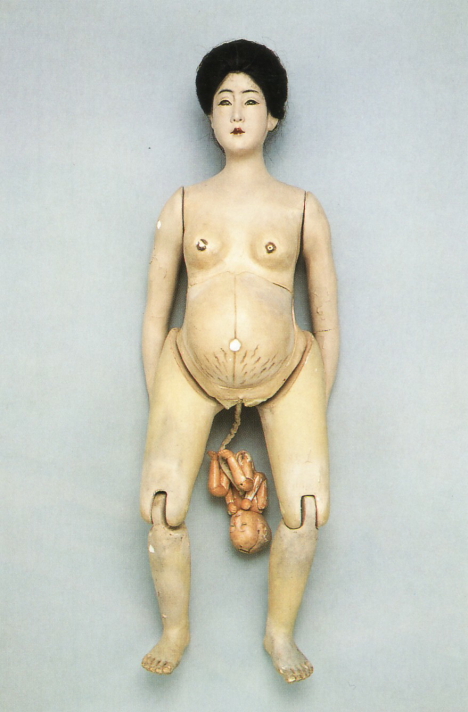
"Dark-skinned" pregnant doll - Edo-Tokyo Museum [+]
For example, records from 1864 describe a popular show in Tokyo's Asakusa entertainment district that educated audiences about the human body. The show featured a pregnant doll whose abdomen could be opened to reveal fetal models depicting the various stages of prenatal development.
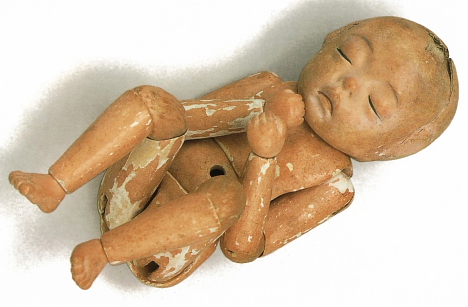
Baby doll - Edo-Tokyo Museum [+]
Similarly, records of Japan's first national industrial exhibition in 1877 indicate a Yamagata prefecture hospital doctor named Motoyoshi Hasegawa showed off an elaborate set of fetus models illustrating seven different stages of growth, from embryo to birth.
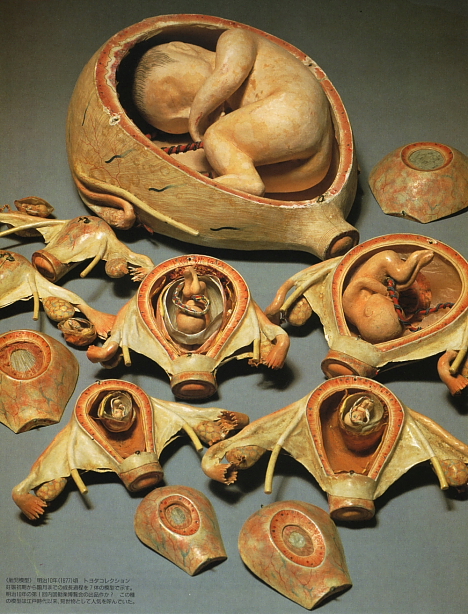
Fetus model set (circa 1877) - Toyota Collection [+]
Although it is unclear whether the fetus model set pictured here is the same one Hasegawa showed in 1877, records suggest his model was a hit at the exhibition.
[Source: Geijutsu Shincho magazine, July 2001]